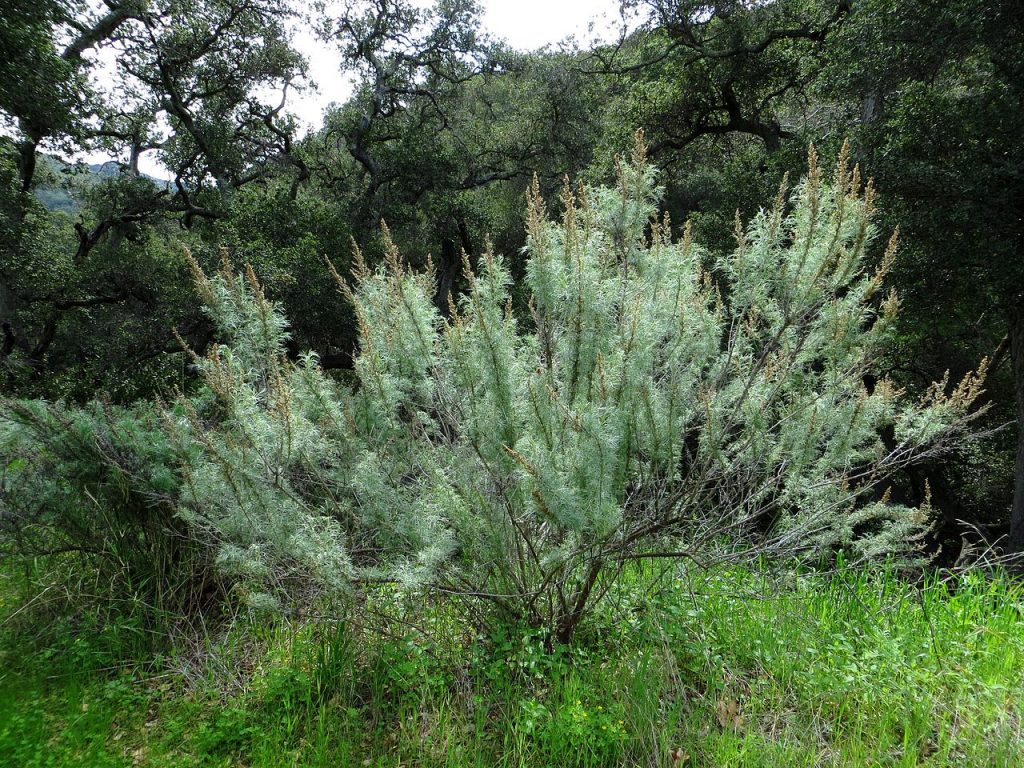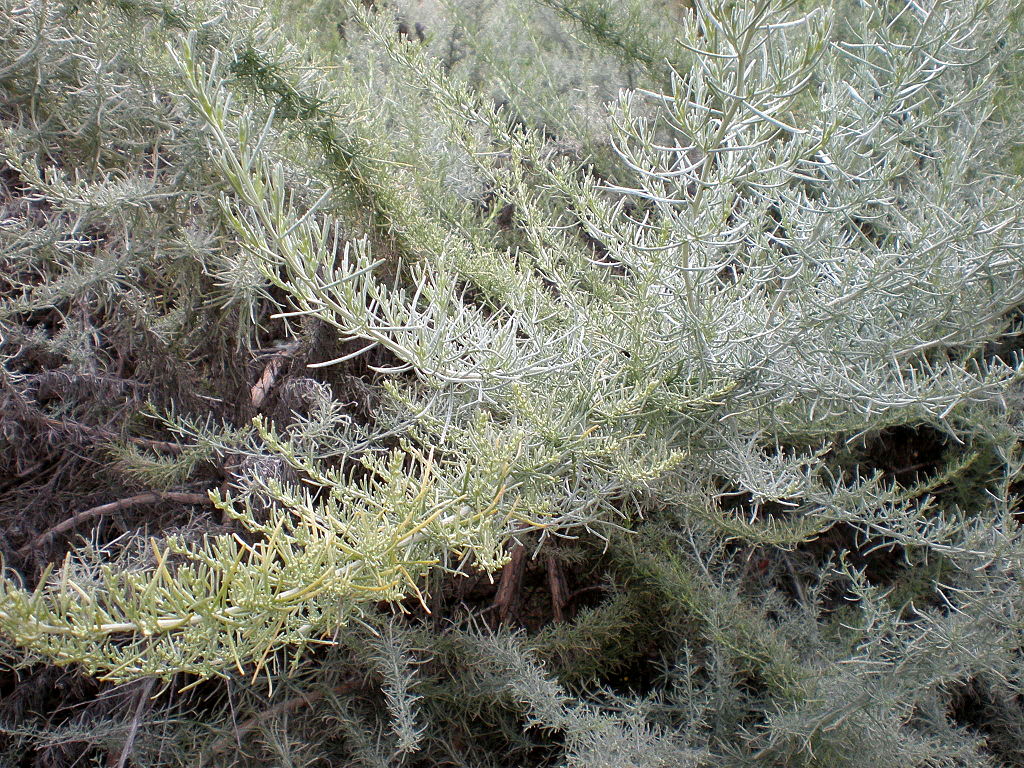
Also known as coastal sagebrush and California sagewort, this evergreen shrub is native to northern Baja California and much of central and southern California where it is often associated with coastal sage scrub and chaparral. It is a member of the aster family, Asteraceae, that also includes sunflower, yarrow, and lettuce. The plant usually grows about 4′ tall, branches from the base, and has slender, flexible stems. The 1/2-4″ long leaves are light green to gray-green, hairy, and aromatic. They are pinnately divided into 2-4 threadlike lobes and have rolled under margins rolled. From late summer to winter, leafy stems bear sparse clusters of inconspicuous greenish to white flowerheads sometimes tinged with reddish purple. Each flowerhead is composed of 6-10 pistillate flowers surrounding 15-30 disc flowers. The fruit is a tiny resinous achene. California sagebrush is very drought tolerant and an excellent choice for erosion control. In addition, it provided foraging and nesting sites for many birds and supports a number of amphibians, reptiles and small mammals. The cultivar ‘Canyon Gray’ grows only 1-2′ tall and is an excellent ground cover. The genus name Artemisia honors the Greek goddess of chastity, the hunt and the moon. The specific epithet, californica, is the latinized name of the place where the plant is native. Photo Credit Antandrus Wikimedia Commons

Type: Evergreen shrub (may be summer deciduous)
Outstanding Feature: Foliage; drought tolerance
Form: Spreading, mounding, rounded
Growth Rate: Rapid
Bloom: Inconspicuous flowerheads from late summer to winter
Size: 1-8′ H x 4′ W
Light: Full sun in cooler areas such as the coast, part shade in warmer areas inland
Soil: Sandy, dry, well-drained
Hardiness: Zones 7-10
Care: Prune to avoid straggly growth
Pests and Diseases: None of significance
Propagation: Seed
Outstanding Selection:
‘Canyon Grey’ (prostrate; 1-2′ H)
Photo Credit: Consultaplantas Wikimedia Commons